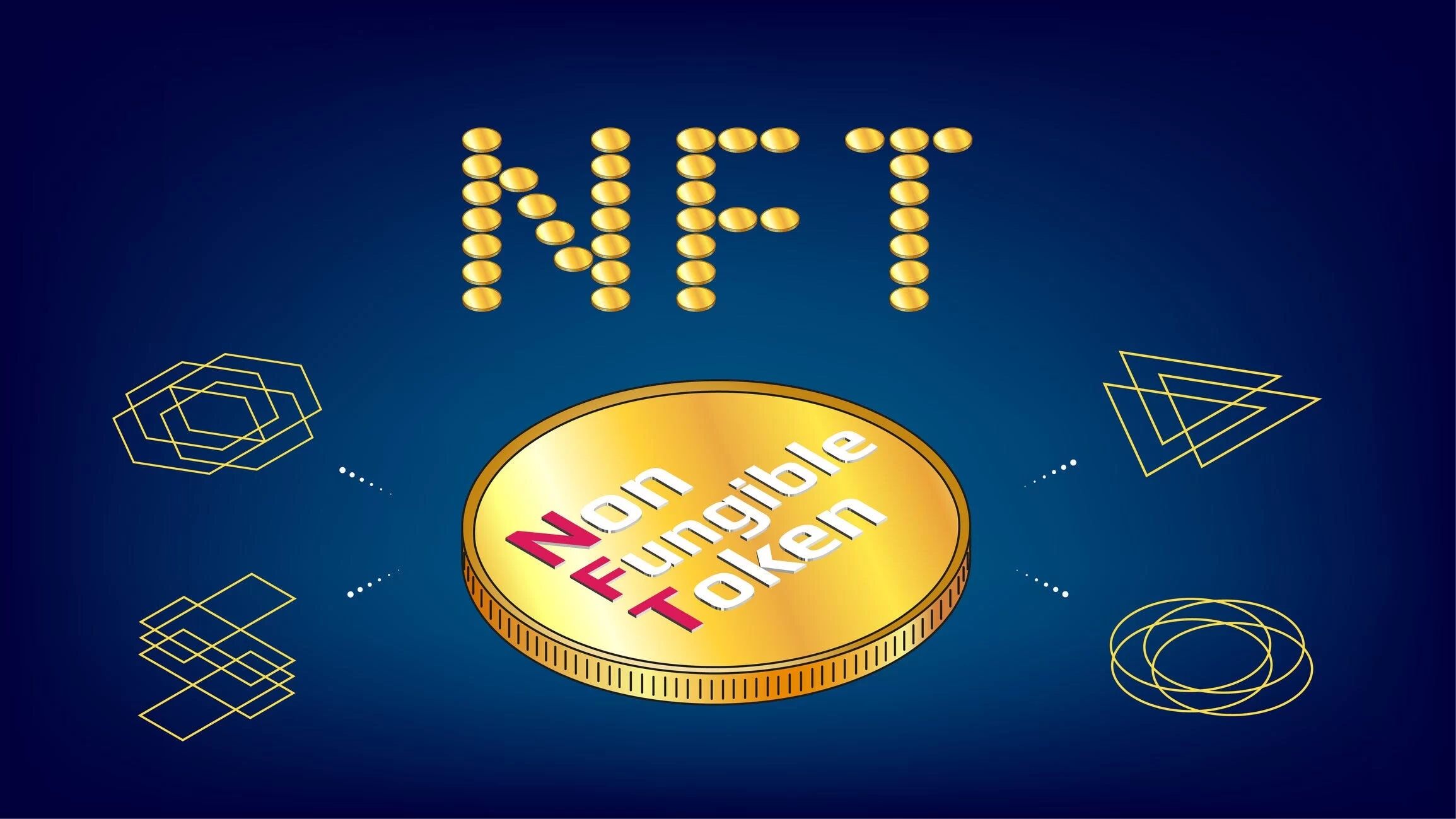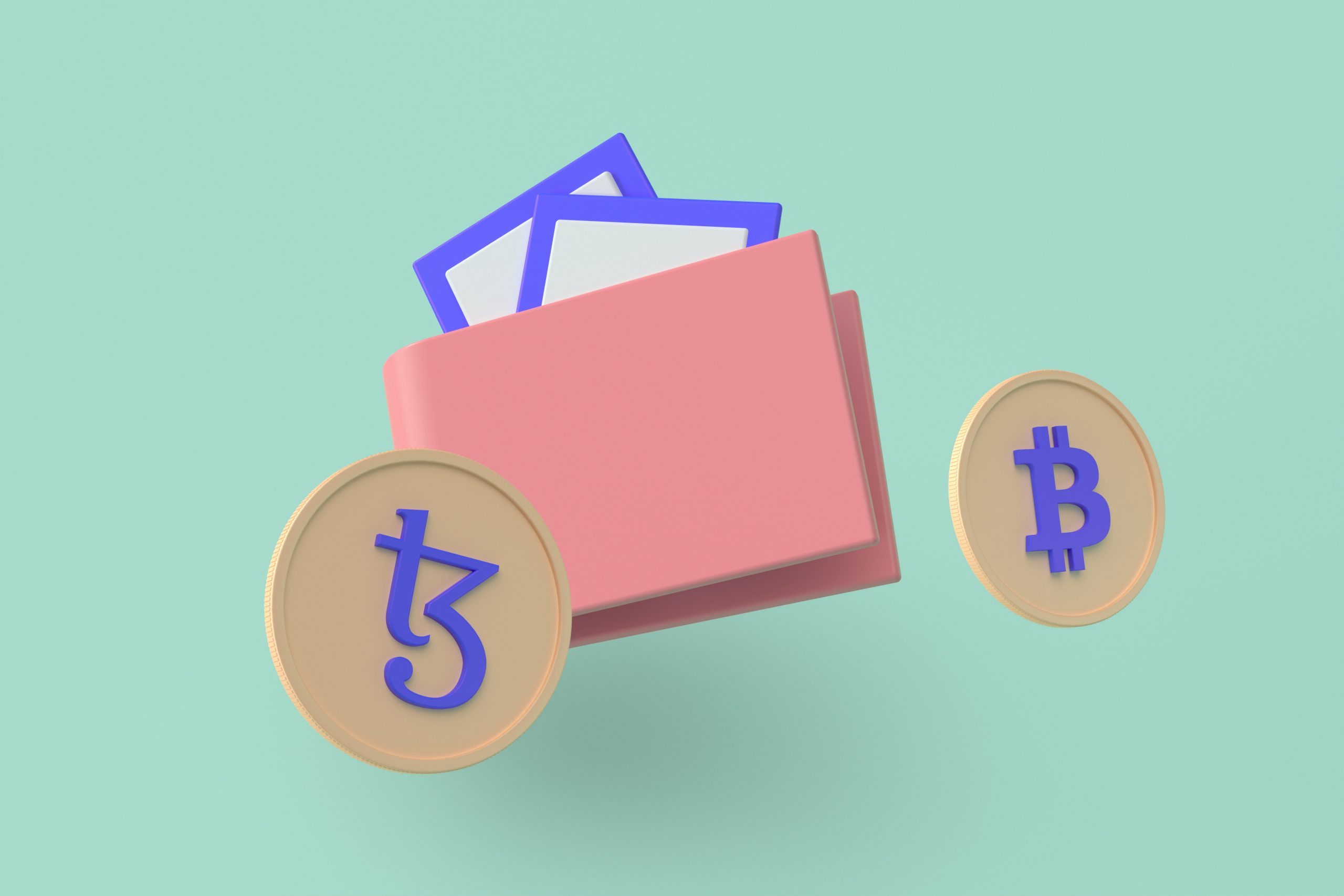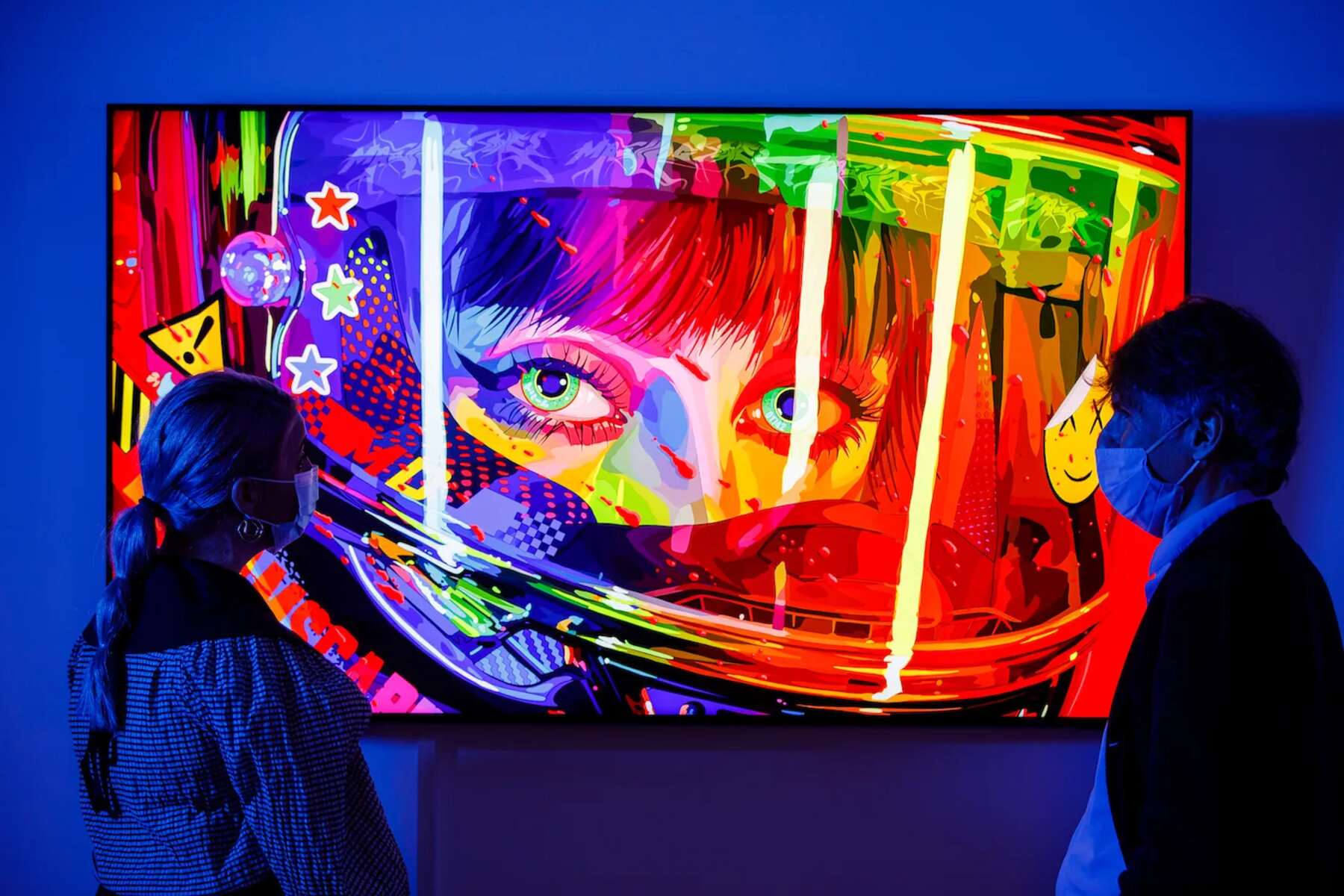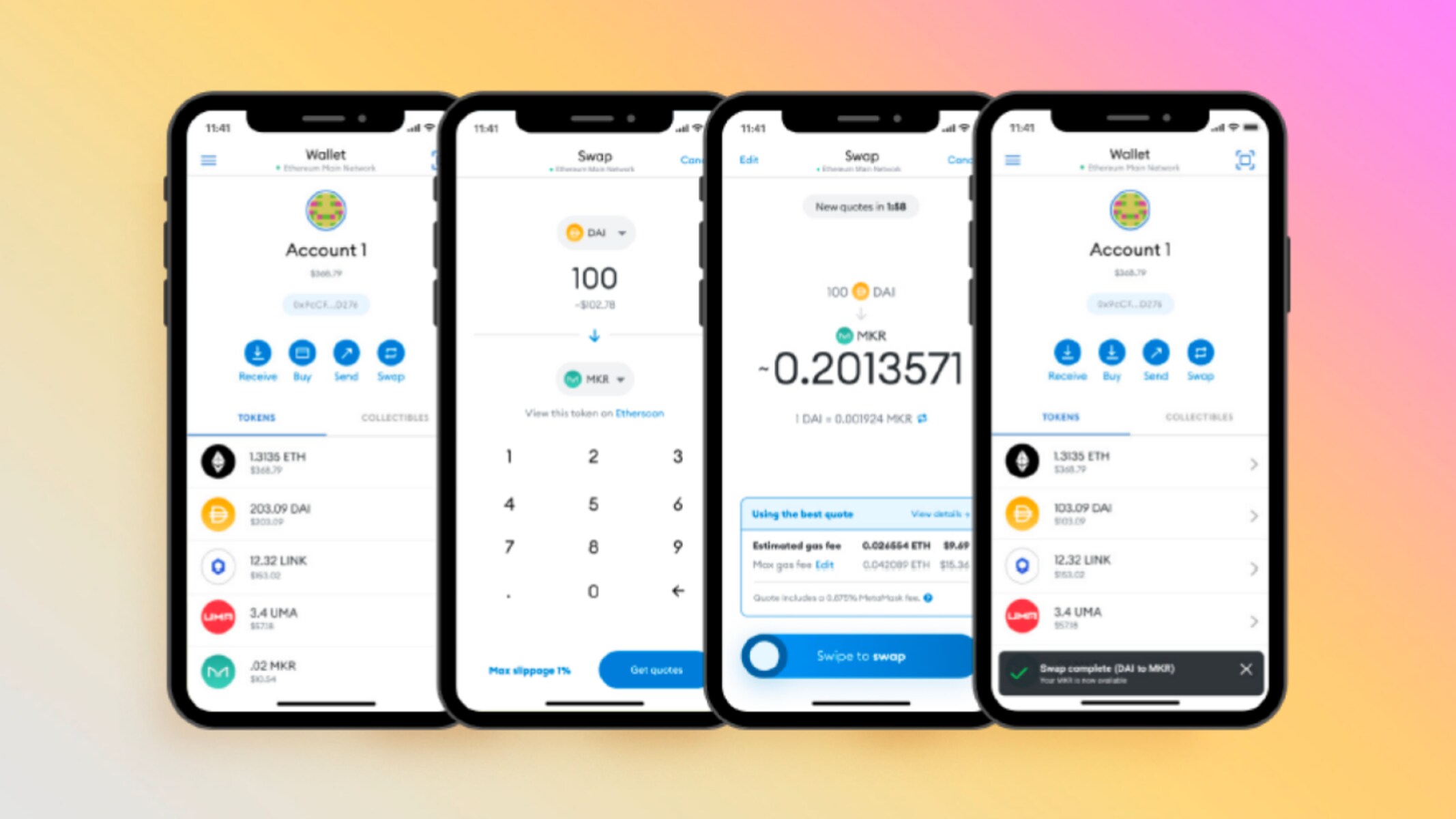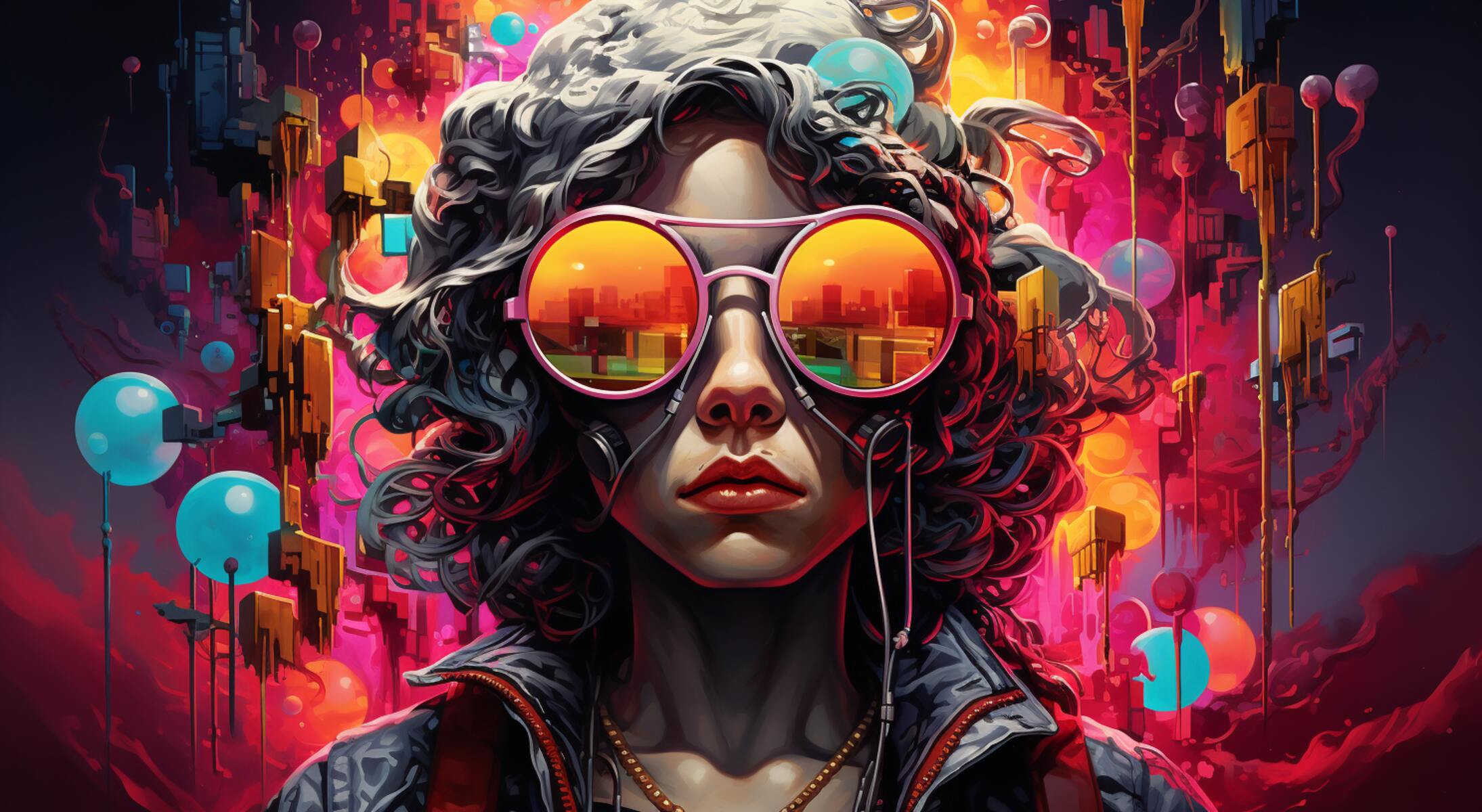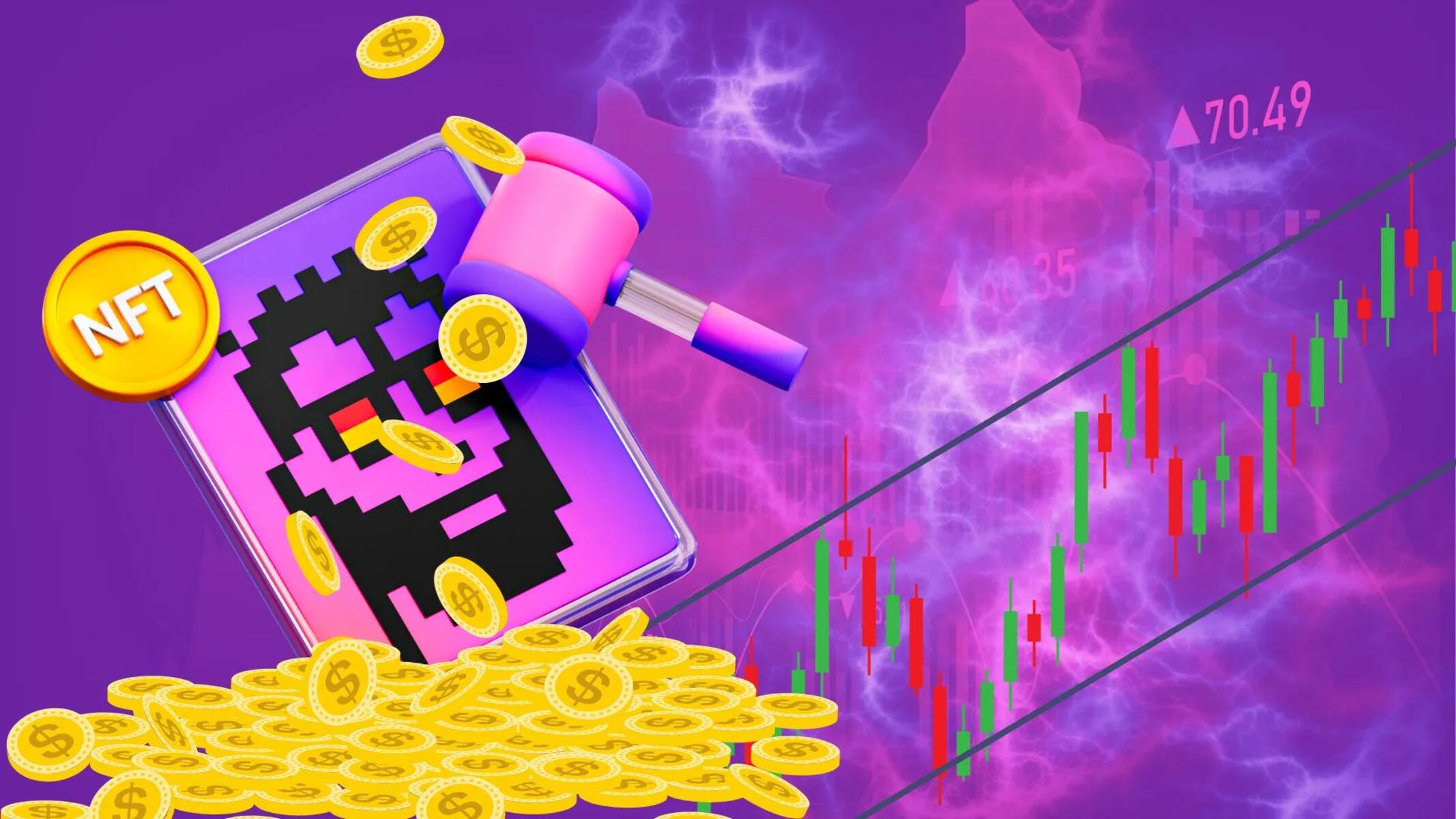Introduction
Welcome to the world of NFTs! If you’ve been keeping up with the latest trends in technology and finance, you may have heard the term “NFT” floating around. But what exactly are NFTs, and why is there so much buzz surrounding them? In this article, we will explore the fascinating world of Non-Fungible Tokens (NFTs) and dive into the depths of what makes them unique and captivating for creators, collectors, and investors alike.
NFTs have taken the digital landscape by storm, offering a new and exciting way to buy, sell, and own digital assets. While cryptocurrencies such as Bitcoin and Ethereum have been making headlines for several years, NFTs have emerged as a groundbreaking application of blockchain technology in the realm of digital art, collectibles, and even virtual real estate.
Unlike cryptocurrencies, which are fungible and can be exchanged on a one-to-one basis, NFTs represent ownership and authenticity of a specific digital item or asset. These can include anything from digital artworks, music, videos, virtual real estate, in-game items, and more. Each NFT is one-of-a-kind and cannot be replicated or replaced, making them incredibly valuable as they carry a unique digital signature and provenance.
The concept of owning a digital asset might seem unusual at first, especially when it comes to things that can be easily copied and shared on the internet. However, NFTs revolutionize the digital ownership experience by utilizing blockchain technology to establish indisputable records of ownership and transaction history. These records are publicly accessible and verifiable, providing both creators and buyers with a sense of trust and transparency in the highly decentralized digital world.
The rise of NFTs has opened up new possibilities for artists, musicians, and creators to monetize and showcase their work. Previously, digital artists often struggled to protect their creations from unauthorized duplication and struggled to earn a living from their craft. NFTs provide a solution by allowing artists to create and sell unique digital items directly to collectors, cutting out traditional intermediaries and potentially increasing their revenue streams.
Furthermore, the world of collecting has been transformed with the emergence of NFTs. Collectors can now own digital items that have intrinsic value and limited availability. The scarcity and uniqueness of NFTs make them highly sought-after and can lead to significant appreciation in value over time. This has created a new frontier for investment opportunities and has attracted attention from collectors and enthusiasts worldwide.
In the following sections, we will explore how NFTs work, the benefits they offer, various use cases, the challenges and risks involved, as well as the popular platforms and marketplaces where NFTs are bought and sold. Get ready to dive into the exciting world of NFTs and discover the endless possibilities they hold.
What are NFTs?
Non-Fungible Tokens (NFTs) are unique digital assets that utilize blockchain technology to establish ownership and authenticity. While cryptocurrencies like Bitcoin and Ethereum are fungible, meaning each unit is interchangeable with another, NFTs represent something unique and cannot be exchanged on a one-to-one basis.
Think of NFTs as digital certificates of ownership for a specific item or asset. These items can range from digital art, music, videos, virtual real estate, in-game items, and more. Each NFT carries a unique digital signature and provenance that verifies its authenticity, making it valuable to collectors and enthusiasts.
One of the key features of NFTs is their indivisibility. Unlike cryptocurrencies that can be divided into smaller units, NFTs are whole and cannot be divided. This means that each NFT is a complete and one-of-a-kind asset in itself.
To understand the value of NFTs, it’s crucial to grasp the concept of scarcity. Scarcity refers to the limited supply of a particular item. NFTs can be designed with scarcity in mind, creating a sense of exclusivity and rarity. An artist can choose to release only a limited number of NFTs for a particular artwork, adding to its value and desirability.
Blockchain technology plays a vital role in ensuring the security and verifiability of NFTs. NFTs are typically built on blockchain platforms like Ethereum, which provide a decentralized ledger that records all transactions and ownership details. This public ledger, known as the blockchain, is accessible to anyone and serves as proof of ownership and authenticity.
When a creator mints an NFT, they embed specific information into the token, such as the artwork’s details, ownership history, and metadata. This information is permanently associated with the NFT and cannot be altered or tampered with. This level of transparency and immutability ensures that the provenance of the NFT can be easily traced back to its original creator.
NFTs have garnered significant attention due to their potential to revolutionize the digital art world. Historically, digital artists faced challenges with copyright infringement and difficulty monetizing their work. NFTs provide a solution by allowing artists to sell their digital creations directly to collectors and retain more control over their intellectual property rights.
Collectors are drawn to NFTs because they offer a unique ownership experience. Owning an NFT grants exclusive rights to a digital item that cannot be duplicated or replicated. Additionally, owning an NFT allows collectors to support their favorite artists and engage with a passionate community of creators and enthusiasts.
In the next section, we will explore how NFTs work, taking a closer look at the underlying technology and the process of minting, buying, and selling these unique digital assets.
How do NFTs work?
NFTs operate on blockchain technology, which serves as a decentralized ledger to record and verify ownership of digital assets. The most commonly used blockchain for NFTs is Ethereum, although other blockchains like Binance Smart Chain and Flow are also gaining popularity.
The process of creating and owning an NFT begins with minting. Minting an NFT involves turning a digital item or artwork into a unique token on the blockchain. Artists and creators can use various NFT marketplaces and platforms to mint their creations. During the minting process, the creator includes relevant information such as the asset’s title, description, image, and additional metadata. This metadata can include details about the artwork’s history, licensing rights, and provenance.
Once minted, the NFT is assigned a unique identifier, known as a token ID. This token ID distinguishes the NFT from all others on the blockchain, ensuring its individuality and preventing duplication. The NFT and its associated metadata are then stored on the blockchain, making it publicly accessible and verifiable.
From there, the ownership and transaction history of the NFT are recorded on the blockchain, providing an immutable and transparent record of all transfers. Each time the NFT is bought, sold, or transferred, this information is updated on the blockchain, allowing anyone to trace the ownership chain back to its original creator.
The ownership of an NFT is typically represented by a digital wallet address on the blockchain. A digital wallet acts as a secure storage space where users can store their NFTs and manage their transactions. Each wallet has a unique address associated with it, which serves as the identifier for ownership.
When someone purchases an NFT, they transfer cryptocurrency, usually Ethereum, from their wallet to the seller’s wallet in exchange for ownership of the NFT. The transaction is recorded and verified on the blockchain, ensuring a secure and transparent transfer of ownership.
Once a user owns an NFT, they have the ability to transfer or sell it to another individual. NFTs can be listed for sale on various marketplaces, where potential buyers can bid or purchase the token directly. The marketplace handles the transaction and facilitates the transfer of ownership, with the blockchain serving as the underlying system for verification.
It is important to note that NFT ownership does not grant copyright or intellectual property rights to the underlying digital asset. The creator may still retain copyrights, and the buyer receives a tokenized representation of ownership. However, this tokenized ownership provides a sense of exclusivity and provenance in the digital realm.
In the following sections, we will explore the benefits of NFTs, the diverse use cases for these unique digital assets, as well as the challenges and risks involved in the growing NFT market.
Benefits of NFTs
Non-Fungible Tokens (NFTs) offer a range of benefits to creators, collectors, and investors, making them an exciting and innovative development in the digital space. Let’s explore some of the key advantages of NFTs:
1. Ownership and Authenticity: NFTs provide a unique way to establish ownership and authenticity in the digital world. Through the use of blockchain technology, the ownership history and provenance of an NFT are recorded and verifiable, giving buyers confidence that they own an original and one-of-a-kind digital asset.
2. New Revenue Streams for Creators: NFTs have transformed the art and creative industries by allowing artists to directly monetize their work. Traditional intermediaries are bypassed, enabling artists to retain more control over their creations and earn a larger portion of the sales revenue. This has opened up new opportunities for artists, musicians, and content creators to generate income.
3. Immutability and Transparency: The decentralized nature of blockchain ensures that once an NFT is minted and recorded on the blockchain, its details remain unchanged. This immutability increases trust and transparency, providing a more secure and reliable system for the buying, selling, and ownership verification of digital assets.
4. Scarcity and Exclusivity: NFTs can be designed with scarcity in mind, creating a sense of exclusivity and rarity. Artists and creators can limit the number of NFTs available for a particular artwork, enhancing its value and desirability. Collectors are drawn to the opportunity to own unique digital items that cannot be replicated or obtained elsewhere.
5. New Collecting Experience: NFTs have revolutionized the concept of collecting. Through owning NFTs, collectors can engage with their favorite artists and be part of a passionate community. It offers a deeper level of interaction and involvement, allowing collectors to support artists directly and participate in the success of their favorite creators.
6. Royalties and Residual Income: NFTs can be programmed with smart contracts, enabling creators to earn ongoing royalties from secondary sales. This means that even if an NFT is resold in the future, the original creator can still benefit financially from the subsequent transactions. This provides artists with a potential long-term revenue stream from their digital creations.
7. Global Accessibility: NFTs and NFT marketplaces operate on the internet, offering global accessibility to creators and collectors. Artists can reach a worldwide audience and connect with potential buyers from different parts of the world, breaking down geographical barriers and expanding their reach.
These benefits have contributed to the immense popularity and growth of NFTs, attracting artists, collectors, and investors who see the potential for innovation and financial opportunities in this emerging field. Next, we will explore various use cases for NFTs and how they are being adopted in different industries.
Use Cases for NFTs
Non-Fungible Tokens (NFTs) have opened up a world of possibilities across various industries. While digital art has been at the forefront of the NFT boom, there are numerous other use cases where NFTs are being adopted. Let’s explore some of the key use cases for NFTs:
1. Digital Art and Collectibles: NFTs have revolutionized the art world by enabling artists to sell and authenticate their digital creations. Artists can mint unique digital artworks, photographs, and even virtual sculptures as NFTs. Collectors can own and trade these digital assets, owning a one-of-a-kind piece of art or collectible with verifiable authenticity.
2. Virtual Real Estate and Virtual Worlds: NFTs have found their way into virtual environments and online gaming platforms. Virtual real estate plots, avatars, in-game items, and virtual accessories can be tokenized as NFTs. This allows players to own and trade virtual assets, creating a new marketplace within the gaming industry.
3. Music and Digital Albums: Musicians and artists can use NFTs to tokenize their music, allowing fans to own exclusive rights or limited edition versions of songs or entire albums. This provides a new revenue stream for artists while giving fans a unique way to support their favorite musicians.
4. Sports Memorabilia and Collectibles: NFTs have entered the world of sports, where they are used to tokenize unique sports memorabilia and collectibles. Fans can own digital versions of sports jerseys, trading cards, and other collectibles associated with their favorite teams and athletes.
5. Virtual Identities and Personal Tokenization: NFTs can be used to represent virtual identities, allowing individuals to tokenize their digital presence and reputation. This can include virtual personas, domain names, social media accounts, and digital signatures.
6. Decentralized Finance (DeFi) and Investment: NFTs have found their way into the world of decentralized finance, where they can be used as collateral or investment assets. NFTs provide fractional ownership opportunities, enabling investors to diversify their portfolio by investing in digital assets with potential for growth and revenue generation.
7. Virtual Events and Experiences: NFTs are being used to tokenize virtual event tickets and access to exclusive online experiences. This allows organizers to create scarcity and value for digital events, while giving participants something tangible to collect and remember the experience by.
These are just a few examples of the diverse use cases for NFTs. As the technology continues to evolve, we can expect to see even more innovative applications in industries such as healthcare, education, real estate, and more. NFTs have the potential to reshape the way we buy, sell, and own digital assets, creating new opportunities and possibilities for creators, collectors, and investors.
In the next section, we will discuss the challenges and risks involved in the world of NFTs, as well as popular NFT platforms and marketplaces where these unique digital assets are bought and sold.
Challenges and Risks of NFTs
While Non-Fungible Tokens (NFTs) have gained significant attention and adoption, there are several challenges and risks associated with this emerging technology. It is important for creators, collectors, and investors to be aware of these factors. Let’s explore some of the challenges and risks of NFTs:
1. Environmental Impact: The creation and trading of NFTs on blockchain platforms, such as Ethereum, consume a significant amount of energy. This has raised concerns regarding the environmental impact of NFTs, especially in light of the growing interest and demand for these digital assets.
2. Lack of Regulation: The NFT market currently operates with limited regulations, making it susceptible to scams and fraudulent activities. There have been instances of fake or stolen artwork being sold as NFTs, leading to financial losses for buyers. The lack of clear legal frameworks and consumer protection presents risks for participants in the NFT market.
3. Volatility and Speculation: The value of NFTs can be highly volatile, leading to significant price fluctuations. Speculation and hype can drive up prices artificially, making it challenging for investors to determine the true value of an NFT. This volatility poses risks for those looking to invest in NFTs.
4. Intellectual Property Concerns: NFTs raise questions around intellectual property rights. While owning an NFT grants tokenized ownership, the underlying digital asset may still be subject to copyright restrictions. This presents legal challenges and potential disputes surrounding ownership and usage rights.
5. Liquidity and Market Saturation: The rapidly growing NFT market has led to a saturation of offerings, making it increasingly difficult for new and lesser-known creators to gain visibility and find buyers for their NFTs. This can result in illiquid assets and limited market interest, affecting the potential returns for creators and investors.
6. Environmental and Social Backlash: The conspicuous consumption associated with NFTs and the high-profile sales have garnered criticism for their perceived extravagance. As a result, some individuals and communities have expressed concerns about the detrimental impact on the environment and social equality.
7. Technological Limitations: While blockchain technology provides the foundation for NFTs, it is not without limitations. Issues such as scalability, high transaction fees, and blockchain congestion can hinder the user experience and accessibility of NFTs, especially during periods of peak demand.
Navigating these challenges and risks requires careful consideration, due diligence, and awareness of the evolving NFT landscape. It is essential for participants in the NFT market to be mindful of the sustainability, regulatory, and legal aspects to protect their interests and make informed decisions.
In the next section, we will explore popular NFT platforms and marketplaces, where individuals can buy, sell, and discover a wide range of unique digital assets.
Popular NFT Platforms and Marketplaces
As the popularity of Non-Fungible Tokens (NFTs) continues to soar, numerous platforms and marketplaces have emerged, catering to the growing demand for buying, selling, and trading unique digital assets. Here are some of the most popular NFT platforms and marketplaces:
1. OpenSea: OpenSea is one of the largest decentralized marketplaces for NFTs. It offers a wide range of digital assets, from artwork and collectibles to virtual land and domain names. OpenSea provides a user-friendly interface and supports various blockchain platforms, including Ethereum and Flow.
2. Rarible: Rarible is an Ethereum-based marketplace that allows creators to mint, sell, and trade NFTs. It offers artists the option to retain royalties from subsequent sales. Rarible’s decentralized nature enables users to have full control over their creations and provides a vibrant community of artists and collectors.
3. SuperRare: SuperRare is a curated marketplace dedicated to digital art. It focuses on high-quality, exclusive artworks and operates on the Ethereum blockchain. SuperRare provides a platform for artists to showcase and sell limited edition digital artworks, attracting collectors who appreciate fine digital craftsmanship.
4. Nifty Gateway: Nifty Gateway is a user-friendly marketplace owned by Gemini, a renowned cryptocurrency exchange. It features works from a variety of artists and offers a range of digital collectibles. Nifty Gateway employs its native blockchain solution, making transactions seamless and efficient.
5. Foundation: Foundation is an invitation-based marketplace that emphasizes creativity and stands out for its community-focused approach. The platform showcases a wide range of digital artworks, including illustrations, animations, and generative art. Foundation aims to foster a supportive community and provide a curated space for emerging artists.
6. Async Art: Async Art pioneered the concept of programmable art, allowing collectors to participate in the creative process by influencing the artwork’s appearance and behavior. Each artwork consists of multiple layers, and ownership of individual layers can be traded as separate NFTs.
7. Decentraland: Decentraland is a virtual reality platform built on the Ethereum blockchain. It allows users to own, build, and monetize virtual real estate and assets within the platform. Decentraland hosts various events, exhibitions, and social activities, creating a thriving virtual metaverse with a vibrant community.
These are just a few examples of the popular NFT platforms and marketplaces available. Each platform offers unique features, focuses, and user experiences. It is essential to research and consider factors such as fees, user interface, community engagement, and platform security when choosing a platform to buy, sell, or explore NFTs.
As the NFT ecosystem continues to evolve, it is expected that new platforms and marketplaces will emerge, providing even more opportunities for creators and collectors to participate in this rapidly-growing market.
In the final section, we will explore how to create and own NFTs, providing an overview of the process and steps involved.
How to Create and Own NFTs
Creating and owning Non-Fungible Tokens (NFTs) allows artists, creators, and collectors to participate in the exciting world of unique digital assets. Here’s an overview of the process involved in creating and owning NFTs:
1. Choose a blockchain platform: Select a blockchain platform that supports NFTs. Ethereum is the most commonly used blockchain, but other platforms like Binance Smart Chain and Flow are also gaining popularity.
2. Set up a digital wallet: Create a digital wallet that is compatible with the chosen blockchain. The wallet will serve as a secure storage space for your NFTs and enable you to interact with the NFT marketplaces.
3. Mint your NFT: Minting an NFT involves turning a digital item or artwork into a unique token on the blockchain. Use an NFT marketplace or platform that supports minting, and follow their instructions to upload your digital asset, provide relevant information, such as title, description, image, and metadata. Once the minting process is complete, your NFT will have a unique identifier on the blockchain.
4. List your NFT for sale: If you intend to sell your NFT, list it for sale on an NFT marketplace. Specify the price or choose to auction it off. Each marketplace has its listing criteria and guidelines, so be sure to familiarize yourself with the platform’s requirements.
5. Purchase NFTs: To own NFTs created by others, you can browse the various NFT marketplaces and platforms. When you find an NFT you want to own, connect your digital wallet to the platform and follow the instructions to complete the purchase by making a payment in the cryptocurrency specified by the marketplace.
6. Secure your NFT: After purchasing or creating an NFT, ensure it is securely stored in your digital wallet. Take precautions to back up your wallet’s private keys and use best practices to protect your wallet from unauthorized access.
It’s important to note that the process and steps involved may vary depending on the chosen blockchain platform and NFT marketplace. Be sure to familiarize yourself with the specific requirements and guidelines of the platforms you choose to work with.
Creating and owning NFTs allows artists to monetize their digital creations, collectors to own unique digital assets, and enthusiasts to be part of a growing digital art ecosystem. Participating in the NFT market offers opportunities for creativity, investment, and engagement within a vibrant community.
Now that you understand how to create and own NFTs, you are ready to explore the possibilities and embrace this innovative technology.
Conclusion
Non-Fungible Tokens (NFTs) have emerged as a groundbreaking application of blockchain technology, enabling the ownership and trading of unique digital assets. From digital art and collectibles to virtual real estate and virtual identities, NFTs have opened up a new world of possibilities in the digital space.
NFTs have provided artists with new opportunities to monetize their digital creations, allowing them to sell directly to collectors and retain more control over their intellectual property. Collectors, on the other hand, can now own unique digital items with verifiable authenticity, creating a sense of exclusivity and provenance.
The NFT market has seen explosive growth, attracting attention from artists, collectors, and investors worldwide. Platforms and marketplaces such as OpenSea, Rarible, and SuperRare have facilitated the buying, selling, and trading of NFTs, creating vibrant communities and fostering new possibilities for innovation and creativity.
However, as with any emerging technology, challenges and risks exist. Environmental concerns, lack of regulation, volatility, and intellectual property issues pose considerations that need to be addressed as the NFT ecosystem evolves. It is essential for participants to navigate these challenges with caution and awareness.
Despite the challenges, the world of NFTs continues to evolve, offering exciting opportunities for artists, collectors, and investors alike. As new use cases are discovered and technology advances, the potential for growth and innovation in the NFT space is vast.
Whether you are a digital creator looking to showcase your work, a collector passionate about owning unique digital assets, or an investor seeking to explore the potential of this emerging market, NFTs provide a dynamic and ever-evolving landscape to engage with.
As you delve into the world of NFTs, remember to stay informed, conduct thorough research, and choose reputable platforms and marketplaces. Embrace the creative possibilities, support your favorite artists, and immerse yourself in the vibrant and diverse community surrounding NFTs.
With careful consideration, NFTs have the potential to shape the future of ownership, art, and innovation in the digital era. So, go ahead and embark on your NFT journey, and discover the possibilities that await in this exciting digital frontier.







